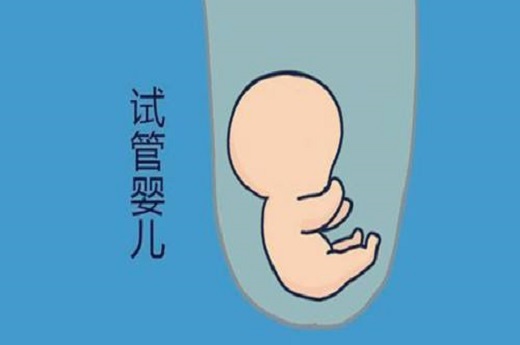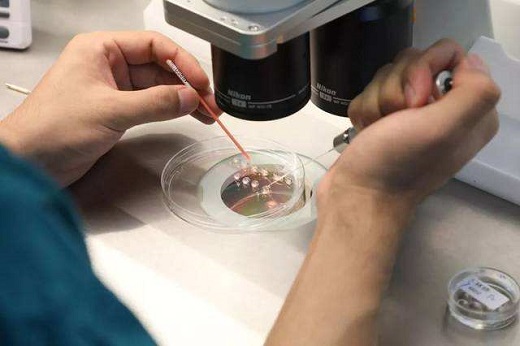In this article, we will explore the success rate of blastocyst transfer in IVF, and discuss the factors that can impact the success rate. We will also delve into the various techniques and technologies used to improve the success rate of blastocyst transfer. Finally, we will conclude with a summary of the overall success rate and provide some insights for individuals considering this fertility treatment.
Success Rate of Blastocyst Transfer
试管婴儿囊胚移植的成功率是多少?这是许多患不孕症夫妇关心的问题。囊胚移植是一种较为先进的辅助生殖技术,通常被认为成功率较高。在进行试管婴儿治疗时,选择囊胚移植的成功率比较高,因为囊胚是在培养箱中培育至第五天的胚胎,其自然选择的能力更强,因此移植后的着床率更高。成功率受到许多因素的影响,接下来我们将深入探讨这些因素。

The success rate of blastocyst transfer in IVF is a concern for many couples struggling with infertility. Blastocyst transfer is considered to have a higher success rate compared to other forms of embryo transfer in assisted reproductive technology. This is because blastocysts are embryos that have been cultured in the laboratory for five days, and they have a higher natural selection ability, leading to a higher implantation rate. However, the success rate is influenced by many factors, which we will explore in detail.
Factors Affecting Success Rate
影响试管婴儿囊胚移植成功率的因素有很多,包括女性年龄、卵巢储备、子宫环境、患者身体状况等。女性年龄是影响成功率的关键因素之一,年龄较大的女性卵子质量较差,囊胚移植成功率会降低。卵巢储备也会影响囊胚移植的成功率,卵巢储备不足的女性成功率较低。子宫环境的好坏也对囊胚移植成功率有影响,如果子宫内膜过厚或过薄,都会影响囊胚的着床。患者的身体状况也是一个重要因素,患有某些疾病或存在其他健康问题都会降低成功率。
There are many factors that can affect the success rate of blastocyst transfer in IVF, including female age, ovarian reserve, uterine environment, and the overall health of the patient. Female age is a key factor that affects the success rate, with older women having lower quality eggs and a lower success rate for blastocyst transfer. Ovarian reserve also plays a role in the success rate, with women with diminished ovarian reserve having a lower success rate. The quality of the uterine environment also impacts the success rate of blastocyst transfer, with thick or thin uterine lining affecting implantation. The overall health of the patient is also an important factor, as certain medical conditions or health issues can lower the success rate.

Techniques and Technologies to Improve Success Rate
为了提高试管婴儿囊胚移植的成功率,医学界不断探索和研究各种技术和方法。其中,孕激素替代治疗、子宫内膜增厚、胚胎染色体筛查等技术被广泛应用。孕激素替代治疗可以帮助调整患者的内分泌环境,提高囊胚移植的成功率。子宫内膜增厚技术可以改善子宫内膜的质量,提高囊胚的着床率。胚胎染色体筛查可以筛查出染色体异常的胚胎,提高移植的胚胎质量,从而提高成功率。
In order to improve the success rate of blastocyst transfer in IVF, the medical community is constantly exploring and researching various techniques and methods. Hormone replacement therapy, endometrial thickening, and embryo chromosomal screening are widely used techniques. Hormone replacement therapy can help adjust the patient's endocrine environment and improve the success rate of blastocyst transfer. Endometrial thickening techniques can improve the quality of the uterine lining and increase the implantation rate of blastocysts. Embryo chromosomal screening can identify embryos with chromosomal abnormalities, improving the quality of the embryos for transfer and thus increasing the success rate.
Success Rate Statistics
根据统计数据显示,囊胚移植的成功率通常比较高,尤其是对于年龄较轻、卵巢储备较好的患者。囊胚移植的成功率可以达到40%到60%左右。对于年龄较大、卵巢储备不足或存在其他健康问题的患者,成功率会有所下降。患者在考虑囊胚移植时,需要充分了解自身情况,并在医生的指导下进行选择。

According to statistics, the success rate of blastocyst transfer is generally high, especially for younger patients with good ovarian reserve. In general, the success rate of blastocyst transfer can reach around 40% to 60%. However, for older patients, those with diminished ovarian reserve, or those with other health issues, the success rate may be lower. Therefore, patients considering blastocyst transfer need to fully understand their own situation and make informed decisions under the guidance of their doctors.
Conclusion
试管婴儿囊胚移植的成功率受到许多因素的影响,包括女性年龄、卵巢储备、子宫环境、患者身体状况等。医学界不断探索和研究各种技术和方法,以提高囊胚移植的成功率。根据统计数据显示,囊胚移植的成功率通常比较高,但也受到患者个体情况的影响。患者在考虑囊胚移植时,需要充分了解自身情况,并在医生的指导下进行选择,以获得更好的治疗效果。
In conclusion, the success rate of blastocyst transfer in IVF is influenced by many factors, including female age, ovarian reserve, uterine environment, and the overall health of the patient. The medical community continues to explore and research various techniques and methods to improve the success rate of blastocyst transfer. According to statistics, the success rate of blastocyst transfer is generally high, but it is also influenced by the individual circumstances of the patient. Therefore, patients considering blastocyst transfer need to fully understand their own situation and make informed decisions under the guidance of their doctors in order to achieve better treatment outcomes.





